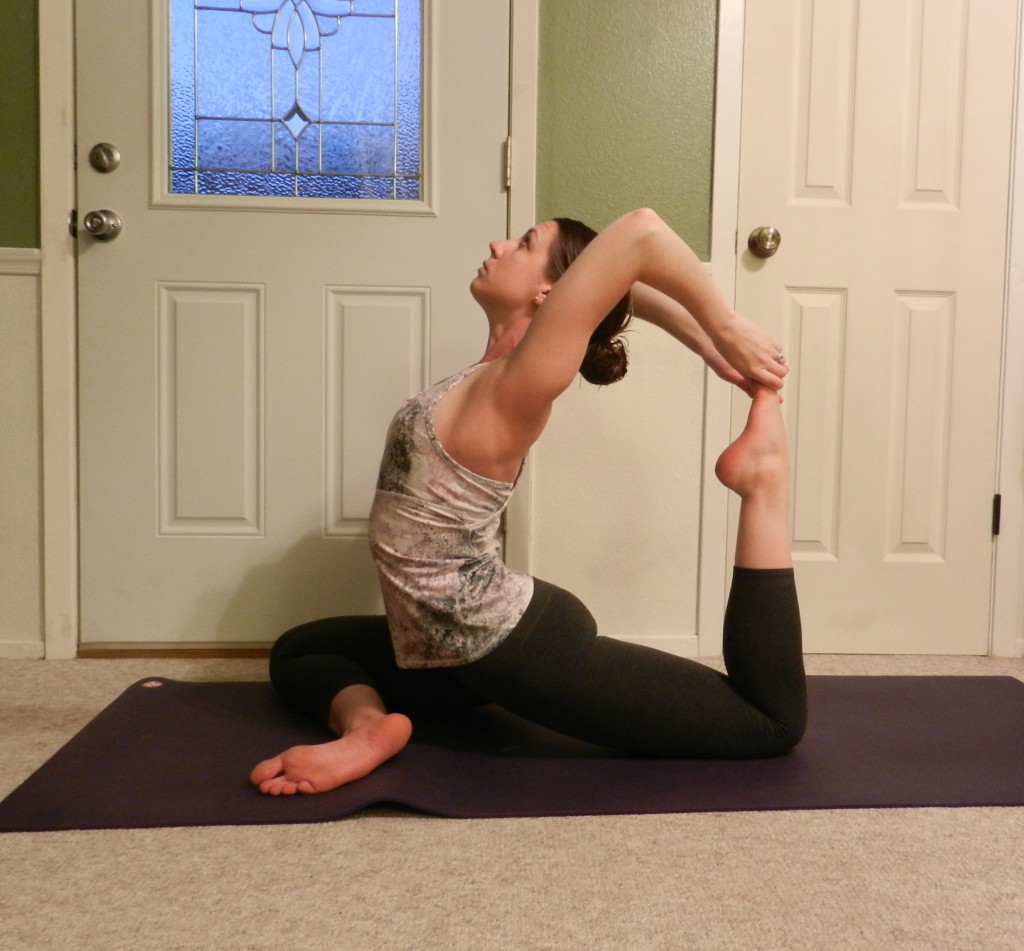One Breath at a Time
Sutra 2.46 sthira sukham asanam स्थिरसुखमासनम्
Something awesome happened in my practice last week. I decided to really let go of expectations and outcomes and instead to concentrate on moving my body and breathing. I started playing around with Rocket 3 practice, blending leg work and standing postures with more back-bending and heart-opening variations of poses. I did not have an agenda or attachment to force my body into these shapes; I let the breath stoke my energy and move my body in ways that felt good in that moment.
One pose in particular that I rarely teach and typically avoid in my own practice is natarajasana, or king of the dancers pose. It requires balance and flexibility in areas that I believed were not accessible to me or the majority of my students. How wrong was I?! When I separated my desire to achieve the perfect back bend from just exploring the pose in my own body, I was able to perceive more clearly and approach the pose from an open heart.
This was just the beginning of a more mindful practice. Little by little as I put my body into the many shoulder openers and strengthening poses as well as back bends in the series, I could feel the asanas (poses) becoming easier. I didn’t have to expend as much effort and my breathing was steady.
T.K.V. Desikachar’s (The Heart of Yoga) translation of Patanjali’s Yoga Sutra 2.46 describes this process in these words:
Asana must have the dual qualities of alertness (sthira) and relaxation (sukha).
Another translation by Rev. Jaganath Carrera (Inside the Yoga Sutras) puts it this way:
Asana is a steady, comfortable posture.
In his book, Teaching Yoga: Essential Foundations and Techniques, Mark Stephens explains the nature of asana practice as
a blended quality in which one is cultivating steadiness, ease, and presence of mind, breath by breath…
And this is where I found myself, balancing between alertness and relaxation, steadiness and comfort, yin and yang, effort and ease. As I pressed my hand and feet into the mat to lift up for urdhva dhanurasana (upward bow pose) I felt weightless and discovered more open space to move and breathe.
Winding down my practice, it was time for one final heart-opening restorative pose: eka pada rajakapotasana (one-leg king pigeon). In nearly five years of practice, this pose had always eluded me. The external rotation of the front hip, lengthening of the quads, psoas, and hip flexors of the back leg, shoulder mobility, and extension of the spine all compacted into one pose. My body was thoroughly prepared for this moment after a 90 minute practice; all that was left for me to do was let go of the false perception in my mind that this pose was too hard. My mantra: just see what happens. Reach back, rotate the shoulder and grab that foot. Lift the heart space. Breathe.
In that moment, everything coalesced and I felt freedom in this pose. The walls I had built up around my mind crumbled, as my body and breath took over.
In this way we find both sthira and sukha in the practice, becoming more disciplined in a way that makes the heart feel light and the mind more clear. Balancing this duality is the key to a long and healthy practice – too much sthira and the body and mind become rigid, too much sukha and the body is weak, the mind complacent. The practice is not about achieving the pose, but rather experiencing the pose in your body and expanding the mind’s understanding of what is possible, one breath at a time.
‹ The Challenge of a Consistent Practice My Rocketship ›
Comments are currently closed.

Reading this completely calmed me down, due to my moving and stress at work. One day, I hope to achieve this pose, you so gracefully acheived!
I love how you said, “Let’s see what happens.” That is yoga after all, right? Don’t push yourself, it will all come naturally to a practicing yogi 🙂